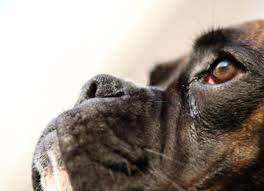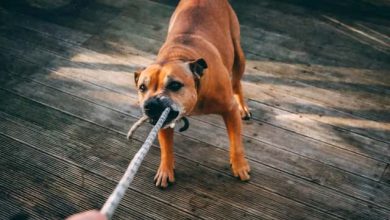Do Dogs Get Their Period? Exploring the Canine Reproductive Cycle
Have you ever wondered if dogs experience a menstrual cycle like humans do? The reproductive systems of dogs and humans differ in many ways, and understanding the unique characteristics of a dog’s reproductive cycle is essential for responsible pet ownership. In this article, we will delve into the topic of a dog’s period, providing insights into the signs, care, and misconceptions surrounding the canine reproductive cycle.
When it comes to discussing a dog’s menstrual cycle, it’s important to clarify that dogs do not menstruate in the same way humans do. While humans shed the lining of their uterus during menstruation, dogs have a different reproductive cycle altogether.
Understanding the Reproductive Cycle in Dogs
Dogs experience what is known as an estrous cycle, which consists of several distinct phases. Unlike humans who have a monthly menstrual cycle, female dogs typically go through an estrous cycle approximately every six to eight months, depending on the breed and individual factors.
The reproductive cycle in dogs consists of four main phases: proestrus, estrus, diestrus, and anestrus. Each phase plays a vital role in the reproductive process, preparing the dog’s body for potential pregnancy.
Signs and Symptoms of a Dog’s Heat Cycle
During a dog’s heat cycle, there are several noticeable signs and symptoms that can help you identify when your furry friend is in heat. These signs can vary among individual dogs, but they generally include both behavioral and physical changes.
Behavioral changes during heat can include increased restlessness, frequent urination, a heightened interest in male dogs, and a change in appetite. Additionally, female dogs in heat may display receptive behavior by lifting their tails to the side, allowing male dogs to mount them.
Physical changes are also evident during a dog’s heat cycle. Swelling of the vulva, a change in vaginal discharge, and a distinctive odor are common signs. However, it’s important to note that not all dogs experience bleeding or discharge during their heat cycle.
Caring for a Dog During Heat
When your dog is in heat, it’s crucial to take proper care to ensure her well-being and prevent any unwanted pregnancies. One effective method is to keep your dog confined to a secure area, such as a fenced yard or indoors. This minimizes the chances of encounters with male dogs.
Understanding and managing behavioral changes during heat is also important. Your dog may be more agitated or anxious, and providing additional mental and physical stimulation can help alleviate some of these effects.
See also: Iowa Dog Breeders: Finding Your Perfect Canine Companion
Maintaining good hygiene and cleanliness is crucial during this time. Frequent checks for any abnormal discharge and regular bathing can help prevent infections and keep your dog comfortable.
Health Concerns and Considerations
While a dog’s heat cycle is a natural process, it’s not without potential risks and complications. Unwanted pregnancies, pyometra (uterine infection), and an increased risk of certain cancers are among the health concerns associated with intact female dogs.
To mitigate these risks, responsible pet owners often choose to spay their female dogs. Spaying not only prevents unwanted pregnancies but also eliminates the risk of certain health issues and behavioral changes associated with heat cycles.
Common Misconceptions about Dogs and Menstruation
There are several misconceptions surrounding dogs and menstruation that often lead to confusion among pet owners. One common misconception is that dogs experience menstruation similar to humans. However, as we have established, dogs have an estrous cycle, which is different from human menstruation.
Educating dog owners about the distinct reproductive cycle of dogs is crucial to dispel these misconceptions. By providing accurate information, we can help pet owners make informed decisions about their dog’s reproductive health.
FAQs about do dogs get periods
Here are the most FAQs about do dogs get periods:
Can male dogs sense a female dog in heat?
Yes, male dogs have a keen sense of smell that allows them to detect pheromones released by female dogs in heat.
How long does a dog’s heat cycle last?
A dog’s heat cycle typically lasts for about 2-3 weeks, but it can vary between individual dogs.
Is it normal for a dog to have an irregular heat cycle?
Some dogs may have irregular heat cycles, especially during their first cycle. However, if you notice significant irregularities or abnormalities, it’s best to consult a veterinarian.
Can a dog get pregnant during her first heat?
Yes, dogs can get pregnant during their first heat cycle. It’s crucial to be vigilant and take appropriate measures to prevent unwanted pregnancies.
What should I do if my dog’s heat cycle lasts longer than usual?
If your dog’s heat cycle lasts longer than usual or you notice any concerning symptoms, it’s recommended to consult a veterinarian to rule out any underlying health issues.
See also: How Dangerous Are Shar Pei Dogs
Conclusion
Understanding a dog’s reproductive cycle is essential for responsible pet ownership. While dogs do not have a menstrual cycle like humans, they experience an estrous cycle. By being knowledgeable about the signs, caring for your dog during heat, and considering spaying, you can ensure the well-being of your furry companion.
Remember, responsible pet ownership includes taking appropriate measures to prevent unwanted pregnancies and providing the necessary care during your dog’s heat cycle. By being proactive and informed, you can ensure a healthier and happier life for your beloved canine companion.



